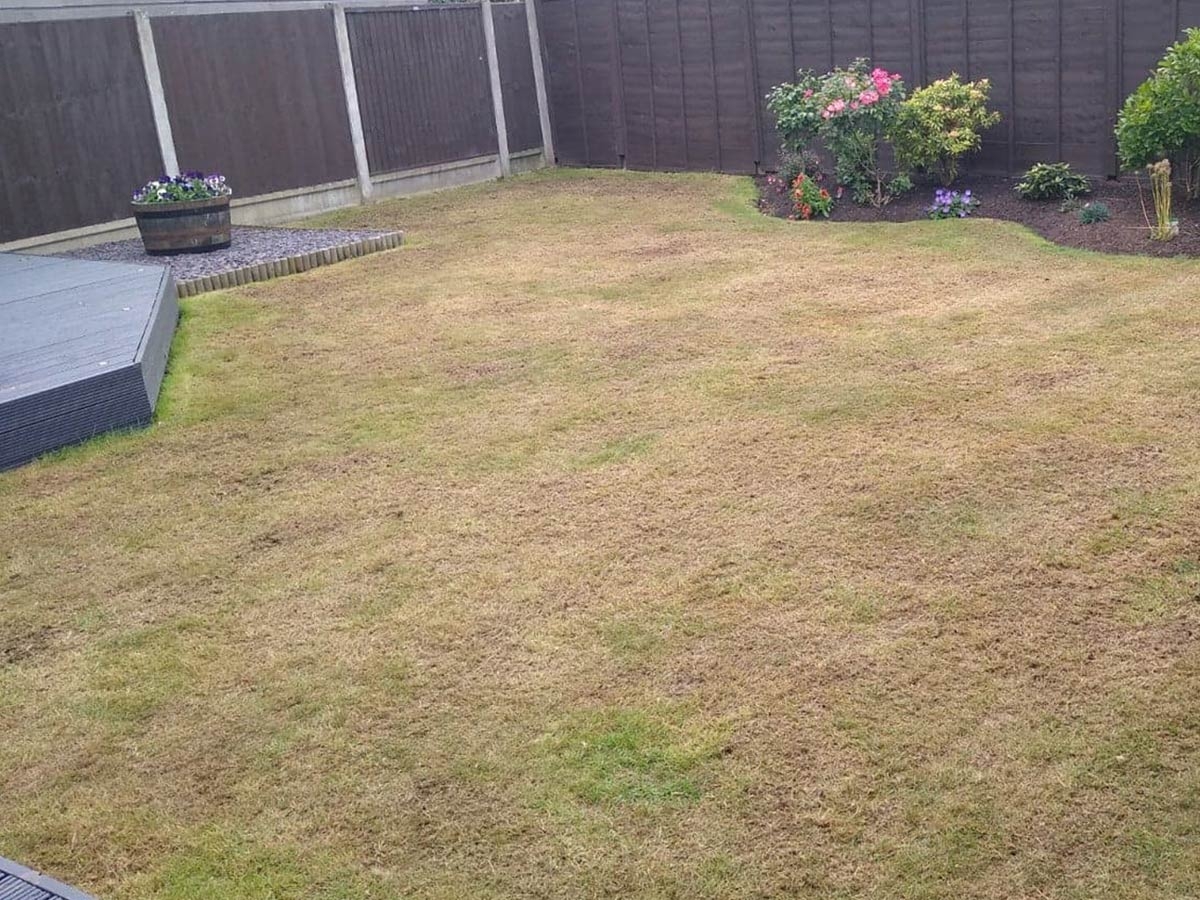What is Lawn Scarification?
Scarification (rather than raking or verticutting) is where blades are set deep enough to touch the soil, thereby removing maximum thatch and leaving behind grooves in the soil surface.
These grooves are key to our results during lawn renovations as they make for an excellent home for new grass seed.
How do we carry out Lawn Scarification?
We carry out lawn scarifications firstly by advising our customer to mow the lawn area prior to our arrival.
Scarifying short grass means our machinery will get straight into the thatch layer and lush healthy grasses will not get caught in our machine. Furthermore, it means that the lawn will not need be cut for some time following our work, allowing the applied seed to go undisturbed whilst it germinates.
We set our professional scarification machine to an appropriate depth for the thatch layer. Dependent on the volume of debris, we may clean this up after every pass with the machine via the use of backpack blowers and rakes, and commonly carry out 2-4 passes at varying depths until we are happy we have reached the soil surface.
If soil conditions allow, we often mow the lawn as a final clear up to be thorough in hoovering out remaining debris - which is ideal prior to Overseeding.
As part of our Lawn Repair and Renovation, Scarification followed by lawn tidying and waste baggage creates the ideal lawn conditions for consecutive Aeration, Overseeding, and dragmatting / brushing whereby seed is pushed into the grooves and holes created with our machinery, producing nothing but the best possible results.
How often is scarification required?
Dependent on how aggressive the lawn has previously been scarified (DIY or professional renovation work), the grass types present, and the standard of lawn desired, this could by anything from scarifying twice per year or once every few years.
We typically advise that our Lawn Repair and Renovation Combo should be carried out on lawns in our care every 1 - 4 years.
Why do we need to scarify lawns?
All lawns require scarifying from time to time. Grass, like any other plant, produces dead matter in the form of leaves, roots and stems. When this organic matter build-up is quicker than what can naturally be decomposed, thatch is produced.
A small thatch layer is beneficial to a lawn, but when this layer surpasses around 10-12mm (half an inch) it starts to become detrimental to the health of the lawn and a scarification should be planned to reduce this.
Thatch build-up can be limited through using a carefully calculated fertiliser programme on lawns without excessive nitrogen and occasional raking of the lawn. Lawn Aeration helps in breaking down the thatch layer naturally by allowing air to penetrate and encouraging decomposition.


